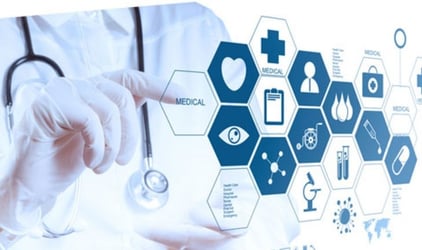Proper use of medical devices in healthcare is directly linked to product effectiveness, favorable patient outcomes and a safe healthcare environment. A well-developed medical device training program will reduce variation in product use, promote best practice, empower clinicians, and reduce overall costs.
The traditional method for the deployment of medical device education ideally occurs three specific phases.
- Phase one is the Didactic Training. This is the process of delivering the theoretical understanding of the medical device and its associated skill requirements. This phase is generally classroom centered and training is delivered by a clinical instructor.
- The didactic is normally followed by a Knowledge Assessment. The knowledge assessment is the second phase in which familiarity with the subject matter is formally assessed through an examination.
- The third phase is the Return Demonstration - This is an instructional method by which the learner attempts to perform a psychomotor skill taught during the didactic. The return demonstration is the critical phase in which the actual physical interaction between a participant and the medical device is evaluated within a true use environment.

Medical device suppliers have begun to see value in electronic learning (e-learning) supported by a learning management system (LMS) over in-person classroom training to remotely deploy the didactic training and the knowledge assessment phases of their device training. This electronic approach affords efficiency in time, control of cost, and consistency of classroom training.
While this approach benefits the first 2 phases of medical device training, the return demonstration remains historically unchanged in its deployment. Clinical educators continue to be deployed into clinical work environments to evaluate the practical skills of a medical device user. This practice is time consuming, costly and represents a true bottleneck in the three-phase training process. Alternative methods of return demonstrations must be explored to achieve use compliance and clinical excellence.
Efforts are now being made to establish effective return demonstration processes delivered in a computer augmented environment. Different from Virtual Reality (VR)-based education, in which the learner is immersed in a completely simulated environment, Augmented Reality (AR) is a technology that adds virtual content to the physical real world, thereby augmenting the perception of reality.
AR allows learners to become active participants within a learning scene anchored in the real world. Therefore, the user may virtually interact with medical equipment and perform dynamic processes while taking the real world into account. While still early in their maturity, AR return demonstrations are being developed to measure interactions with the virtual medical devices and provide consistent performance indicators independent of live clinical educator oversite.
If fully realized, AR may provide the solution to the return demonstration that e-learning provided to the didactic and knowledge assessment. By building efficiencies in time, cost and consistency, AR could finally address the third phase of achieving clinical competency and help to create a new level of clinical excellence.

